
Introducing the Floating Fanzone. Making use of Bramley Moore Dock, the concept proposes a flotilla of floating event spaces, all-weather enclosures, and immersive venues offering live sports screenings and a rich mix of pre and post-match entertainment.
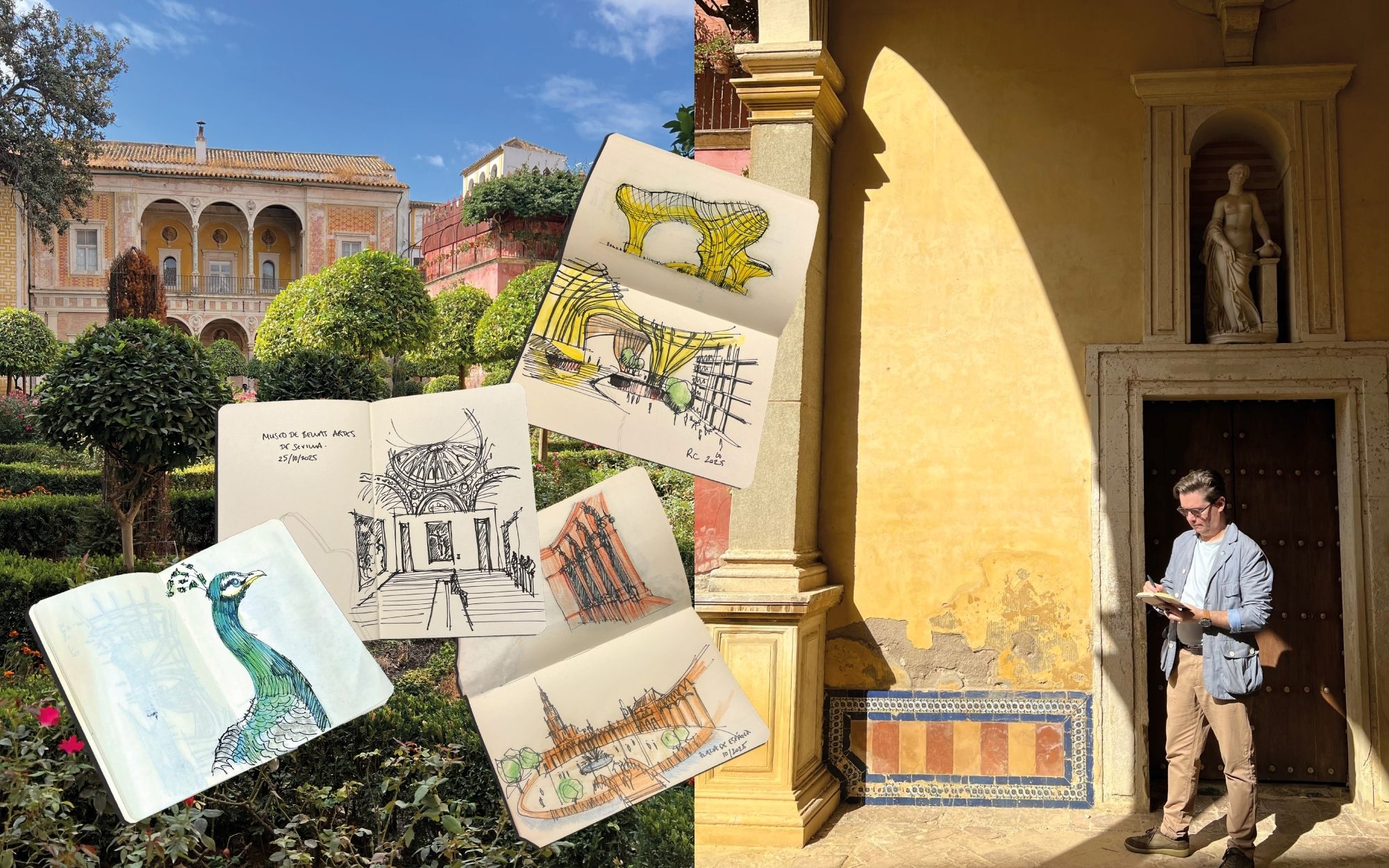
"After I visited the Alvaro Siza archive and the Museo de Bellas Artes, I was determined to carve out more moments on my travels to sketch.
Whilst in Seville, I found myself doing exactly that. Between wandering through the Plaza de Espana and enjoying delicious food in small neighbourhood restaurants, I pulled out my sketchbook to capture the city’s iconic spaces (and its feathered friends).
One of the most spectacular was the sweeping curves of the Setas de Sevilla (Metropol Parasol). A predominantly steel structure in the old quarter of Seville, designed by Jurgen Mayer, it integrates the remains of a Roman colony into the foundations. Families wandered, and I even saw some children using one of the archways in the foundation as a goal post!
Taking time to sketch makes you realise that drawing changes the way you interact with a city. You become still and start to notice the smaller decisions behind larger gestures, like how shade is cast and how routes are defined.
These small observations often stay with me long after the sketch has been finished. Becoming reminders that architecture is not only about shaping a place but also shaping how the community will live within it."
- Richard Coutts
Whilst enjoying time away in Seville, Richard reflects on his field sketches and the small lessons they have taught him.
Read More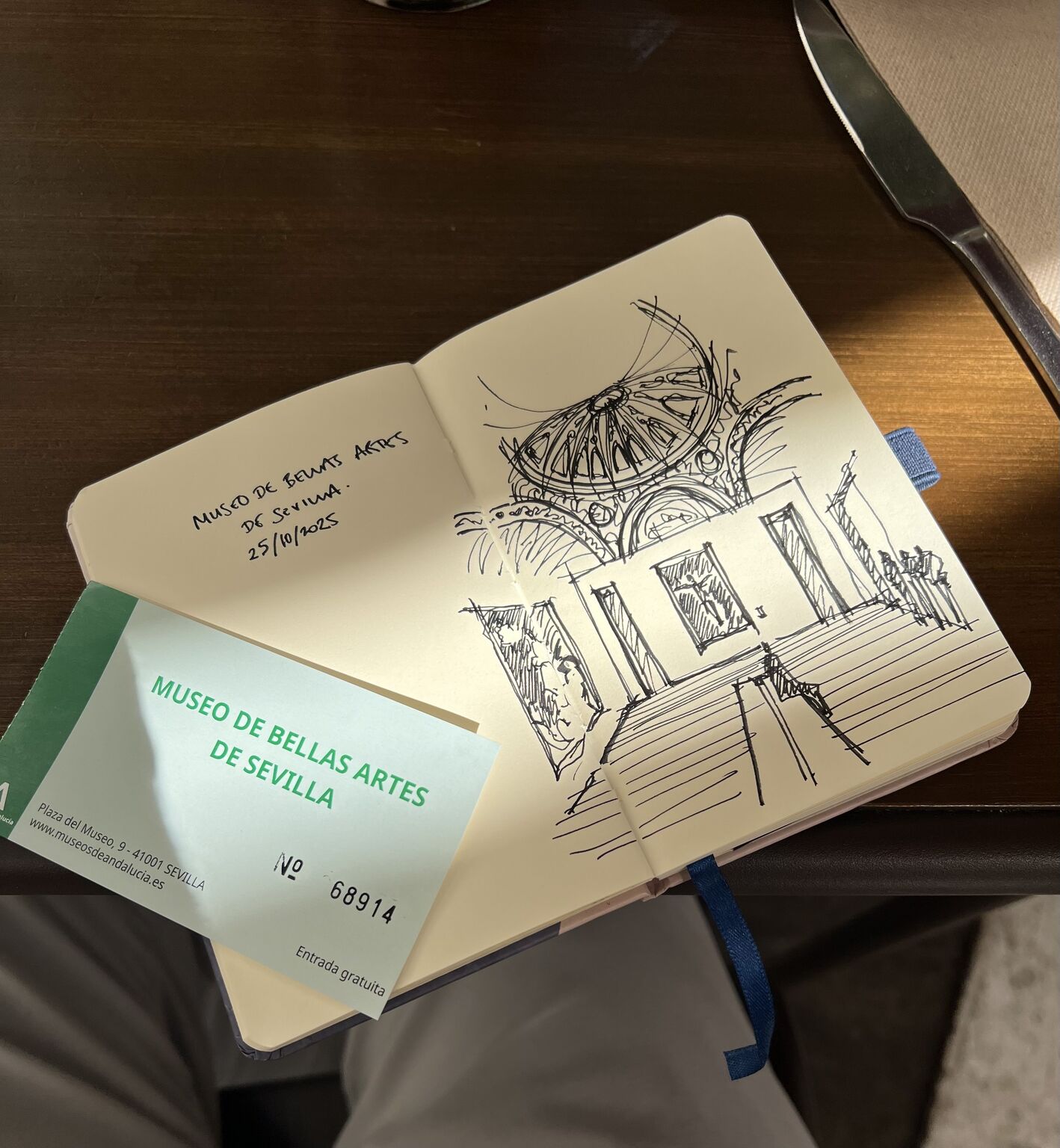
"Following my visit to the Álvaro Siza archive exhibition in Madrid, I was inspired to undertake a few field sketches of my own on recent travels.
During my recent visit to Seville, I visited the Museo de Bella Artes. Known as the most important fine art museum in Seville and Andalusia, with one website saying it is the 2nd most important museum in Spain.
Surrounded by Spanish masterpieces from the Golden Age of Sevillian painting, I picked up the sketchbook and started to capture the top floor of the museum (architects never truly rest!).
Sketching is a way of slowing down and really seeing the space: how light interacts with it, the shifting in scales from room to room, and seeing how visitors interact and use the space. A quick sketch can capture a sense of place that photographs can miss.
Sometimes inspiration doesn’t always come to us at the drawing table; it can be found in the quiet corner or the intricate detailing found on the walls and ceilings of a museum. Each moment feeds into our own creative process in subtle but lasting ways."
Following my visit to the Álvaro Siza archive exhibition in Madrid, I was inspired to undertake a few field sketches of my own on recent travels.
Read More
Whilst on a short break to Madrid to catch up with university friends, Richard visited the School of Architecture to check out the Álvaro Siza archive that was on show. The exhibition occupies the ground and lower ground floors of the school, acting also as a shop window to the hipster area of Chueca. It’s a spectacular location for students and captures the footfall of passing tourists and local artisans.
The exhibition focuses on an essential part of Alvaro Siza’s archive, the exploration of his many sketchbooks, providing the opportunity to view them in alternating perspectives. Despite many projects never seeing the light of day or being altered over time, their original forms are recovered within this space.
Spanning ninety works, the patterns that are repeated, transformed, and interact with each other over the years are identified: light, water, spaces of convergence and anticipation, and curvature, revealing the way Siza sustains his way of thinking and practising architecture.
He witnessed several students, and local architects, replicating Siza's sketches. In an era where AI can generate multiple images in seconds, Richard recounted it felt incredibly refreshing to see slow architecture and what he likes to call HI (Human Intelligence) in practice: people taking their time to convey complex ideas and features through the medium of sketching.
Richard could’ve spent hours in the exhibition, but his friends and family reminded him that dinner was waiting.
Whilst on a short break to Madrid to catch up with university friends, Richard visited the School of Architecture to see the Álvaro Siza archive that was on show.
Read More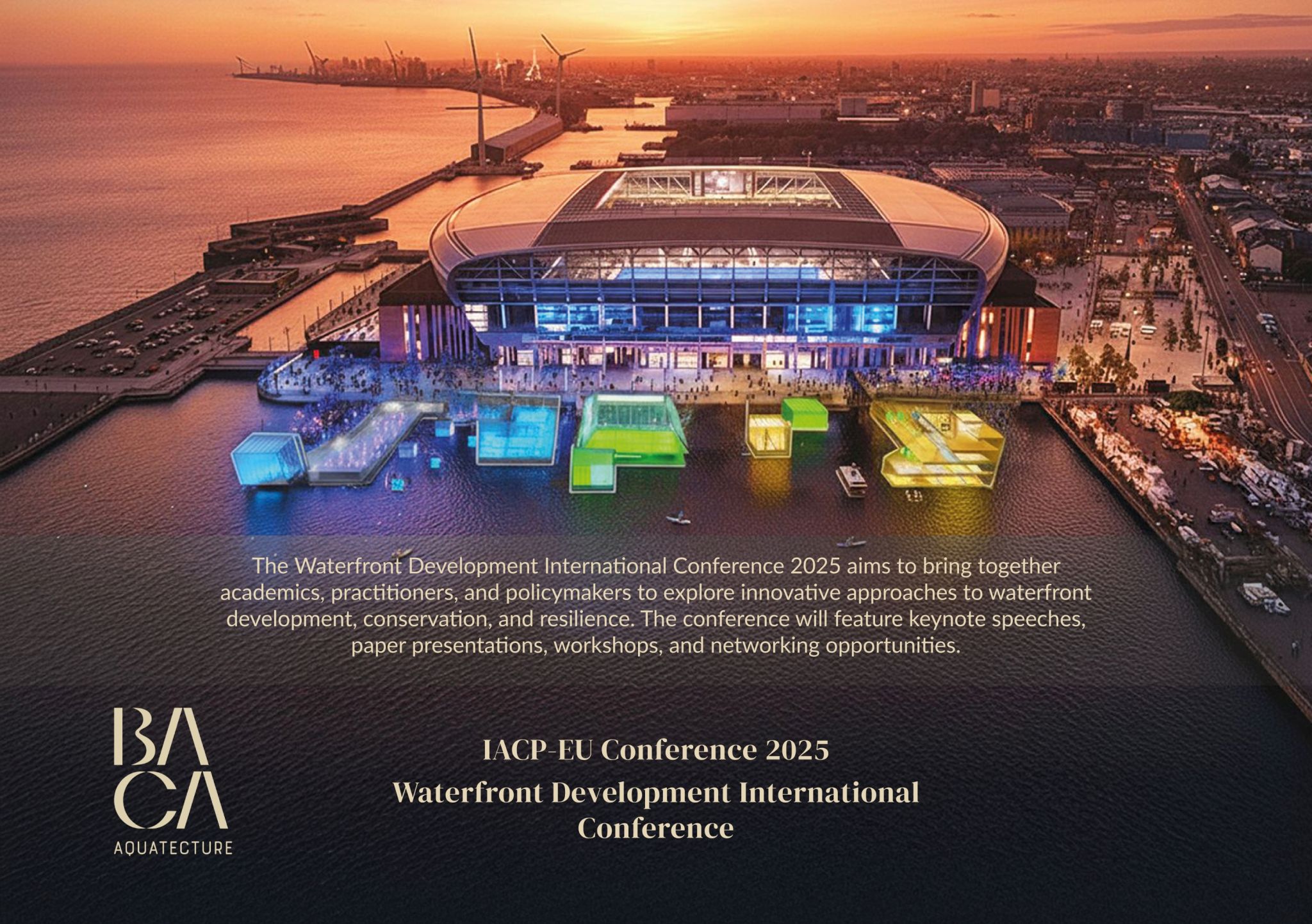
Richard will be speaking at the Liverpool Waterfront Development Conference.
The title of his talk will be Waterfronts as Urban Accelerators: Crafting Clear, Achievable Visions for Post-Industrial Docks.
BACA architects shows opportunities for new floating corporate entertainment and a floating fanzone at Everton's Hill Dickinson Stadium with the attached picture.
We will also showcase the new floating Lido proposed for Queens Dock that has recently received pre-application planning support, subject to details from Liverpool City Council & Canal and Rivers Trust.
Abstract:
This paper examines the potential of post-industrial waterfronts in driving urban regeneration, stressing the need for clear, actionable planning visions beyond iconic architecture and heritage reuse. As cities around the world grapple with challenges of urbanisation, climate change, and housing shortages, disused docks, harbours, and waterfronts present unique opportunities to reimagine urban living in dynamic, water-integrated environments.
The research analyses various waterfront typologies: riverfronts, harbours, docks, canals, each with distinct spatial and historic identities. Through international case studies, including HafenCity in Hamburg, Chelsea Piers in New York, and the Royal Docks and Merwehaven in London and Rotterdam, it explores how successful regeneration is linked to multifunctional design, physical and sensory engagement with water, and resilient infrastructure.
Special focus is given to Rotterdam’s goal of delivering 70,000 new homes by 2040, illustrating pioneering floating development, climate adaptation, and innovative public-private ecosystems. These projects challenge conventional planning by prioritising water activation over land infill. Key findings suggest that effective waterfront regeneration depends on five interlinked components: active public realm, adaptable water uses, resilient flood strategies, functional mixed-use development, and strong engagement with water. Floating infrastructure, cultural anchors, and integrated ecological design (like bio-solar roofs) emerge as essential for combining urban density with environmental sustainability. Ultimately, this thesis argues that water should be treated not as a boundary but as a catalyst for inclusive, resilient, and vibrant urban futures – both on land and on water.
The title of his talk will be 'Waterfronts as Urban Accelerators: Crafting Clear, Achievable Visions for Post-Industrial Docks.'
Read More
Richard Coutts recently participated in Innovate UK’s Global Business Innovation Programme in India to examine how flood-resilient design can support the future of Chennai and Coimbatore. The visit highlighted the opportunities that climate-vulnerable cities hold for advancing climate-resilient architecture.
During the programme, the delegation met with leading organisations, including the British Deputy High Commission in Chennai and the Chennai Resilience Centre. These discussions focused on how governance, innovation, and sustainable urban development in India are shaping the country’s rapidly evolving metropolitan regions. Visits to the Greater Chennai Corporation’s Integrated Command and Control Centre and the IIT Madras Research Park further demonstrated how technology is transforming city systems.
A notable highlight of the trip was meeting ‘rain studio of design’ and experiencing their breakthrough 3D-printed guest house at IIT Madras. The project showcases how sustainable construction technology can merge with visionary architectural approaches, offering new pathways for resilient building in flood-risk environments.
The delegation concluded in Coimbatore at the StartupTN Global Startup Summit, an event that brought together innovators, entrepreneurs, and policymakers committed to advancing smart city innovation in India. The summit underscored the country’s ambition to accelerate clean-tech adoption and future-ready urban design.
India’s rapidly urbanising landscape faces mounting climate pressures, particularly from flooding, a key threat to achieving the vision of Viksit Bharat 2047. Through these engagements, we found strong alignment between their long-standing expertise in flood-resilient design and the pressing needs of India’s cities.
On LinkedIn, Richard emphasised that the experience reinforced BACA’s mission to design places that are not only beautiful, but resilient, regenerative, and prepared for a changing climate.
Richard Coutts recently participated in Innovate UK’s Global Business Innovation Programme in India to examine how flood-resilient design can support the future of Chennai and Coimbatore.
Read More
As part of the InnovateUK Urban Centre Contingency, we recently visited Chennai’s Command and Control Centre (CCC) in southern India. Located beside the iconic neoclassical Ripon Building, the seat of the Greater Chennai Corporation, the CCC offers a fascinating glimpse into how technology is reshaping city management.
Chennai, formerly known as Madras until 1996, is the capital and largest city of Tamil Nadu, India’s southernmost state. Though it covers a similar area to Leeds, Chennai’s population exceeds 12 million. Managing such a dense and fast-growing metropolis demands data-driven precision, and the CCC is central to that effort.
The CCC provides a nationwide view of ICT infrastructure and monitors critical government services. Its customised Network Management System (NMS) dashboard delivers live data on road traffic, waste collection, births and deaths, electricity distribution, and, of relevance to our visit, rainfall and flooding. Application Performance Management (APM) tools further ensure the reliability and performance of vital systems.
During our visit, officials demonstrated how real-time weather and flood data inform rapid municipal responses. A network of weather stations and cameras feeds live information into dashboards that cross-reference historic trends with new data. This enables dynamic management, such as accelerating waste collection in flood-prone areas, to mitigate risk during heavy rainfall.
Flooding remains one of Chennai’s greatest challenges. Experts at the Tamil Nadu Land Use 2025 conference have noted that recurring floods are not acts of nature alone, but consequences of rapid urbanisation and fragmented planning. V. Thiruppugazh, Chairman of the Advisory Committee for Mitigation of Floods, recalled that in 2019 Chennai was close to “Day Zero,” yet suffered major floods in 2015, 2021, and 2023, an indication of the city’s fragile water balance. Encouragingly, citizen groups such as Chitlapakkam Rising are helping restore water bodies and local resilience.
We also visited IIT Madras, home to India’s top engineering students, where teams are developing technologies from anaerobic digesters that treat waste more efficiently to India’s first functioning hyperloop prototype. These innovations reflect the city’s growing technical capacity and creativity.It was a privilege to experience the CCC in operation. The centre exemplifies how data, infrastructure, and human insight can combine to manage complex urban systems. Chennai’s investment in digital governance and its collaboration with institutions like IIT Madras demonstrate a city rushing toward smarter, cleaner, and more resilient urban living.
As part of the InnovateUK Urban Centre Contingency, we recently visited Chennai’s Command and Control Centre (CCC) in southern India.
Read More
Richard has been invited to speak at the Tamil Nadu Global Startup Summit during my upcoming visit to India with the Global Business Innovation Programme (GBIP).
The Summit offers a valuable platform for connecting with a diverse range of governmental bodies, developers, consultants, and fellow architects, fostering new partnerships and collaborations. As India’s cities rapidly evolve, we am excited to share my expertise in flood resilience, climate adaptation, and sustainable design.
We look forward to meeting new partners, strengthening global connections, and exploring opportunities that emerge through this visit.
If you will be attending TNGSS2025 or are based in Chennai or Coimbatore, please do get in touch – we would be delighted to meet you.
Richard has been invited to speak at the Tamil Nadu Global Startup Summit during my upcoming visit to India with the Global Business Innovation Programme (GBIP).
Read More
We are delighted to announce that BACA architects has been selected for the Urban Systems Global Business Innovation Programme (GBIP) in India.
Richard will be travelling to India in October and meeting with many organisations in Chennai, and he will also be attending the Global Startup Summit in Tamil Nadu.
This is an incredible opportunity to build our global partnerships, explore innovative collaborations, and create new business opportunities with our new partners.
With our diverse network of connections, we know that a breadth of talent and opportunities awaits us in India. We will be in Chennai from October 6th to 8th and in Coimbatore from the 9th to 10th, attending TNGSS 2025 on both days. We would welcome the opportunity to meet with governmental organisations, developers, consultants, and other architecture firms.
This programme allows us to learn from India’s rapidly evolving urban landscape while sharing our own expertise in flood resilience and sustainable design.
Together, we can develop solutions that benefit both regions and contribute to a more resilient, connected, and sustainable future.
Do contact us should you wish to meet up - we look forward to hosting you at the British Deputy High Commission.
Richard will be travelling to India in October and meeting with many organisations in Chennai, and he will also be attending the Global Startup Summit in Tamil Nadu.
Read More
On the twentieth anniversary of Hurricane Katrina making landfall, we take a moment to reflect on the disaster’s lasting impact and the ongoing importance of disaster resilience architecture. Director Richard Coutts has revisited this moment in history through a detailed drawing that captures both the devastation and the enduring spirit of the communities affected.
The drawing, recently published by the American Press, offers a poignant visual reminder of the lives forever changed by Katrina. At its centre is a figure inspired by Robert Green Sr., who lost both his mother and granddaughter in the catastrophe. His story embodies the courage and dignity that underpin the very essence of resilient communities planning, reminding us that resilience is both human and structural.
Katrina remains a stark example of how climate extremes demand proactive climate adaptation design. The hurricane demonstrated the consequences of unpreparedness and highlighted the need for design approaches rooted in foresight, trust, and long-term commitment. While engineering plays a crucial role, true resilience requires equitable planning that serves those most at risk.
The lessons from New Orleans also resonate deeply in the UK, where climate pressures are steadily increasing. As Richard notes, the country must shift from an over-reliance on hard defences toward nature-based flood solutions that work with water and natural systems rather than against them. These approaches need to be supported by legal frameworks that extend beyond short political cycles.
Ultimately, Hurricane Katrina is a powerful reminder that living with water is not optional; it is a reality that demands sustained vigilance and investment in climate resilience strategies. As this anniversary encourages reflection and remembrance, it also reinforces the collective responsibility to protect communities facing rising climate risk.
On the twentieth anniversary of Hurricane Katrina making landfall, Richard Coutts has revisited this moment through a detailed drawing.
Read More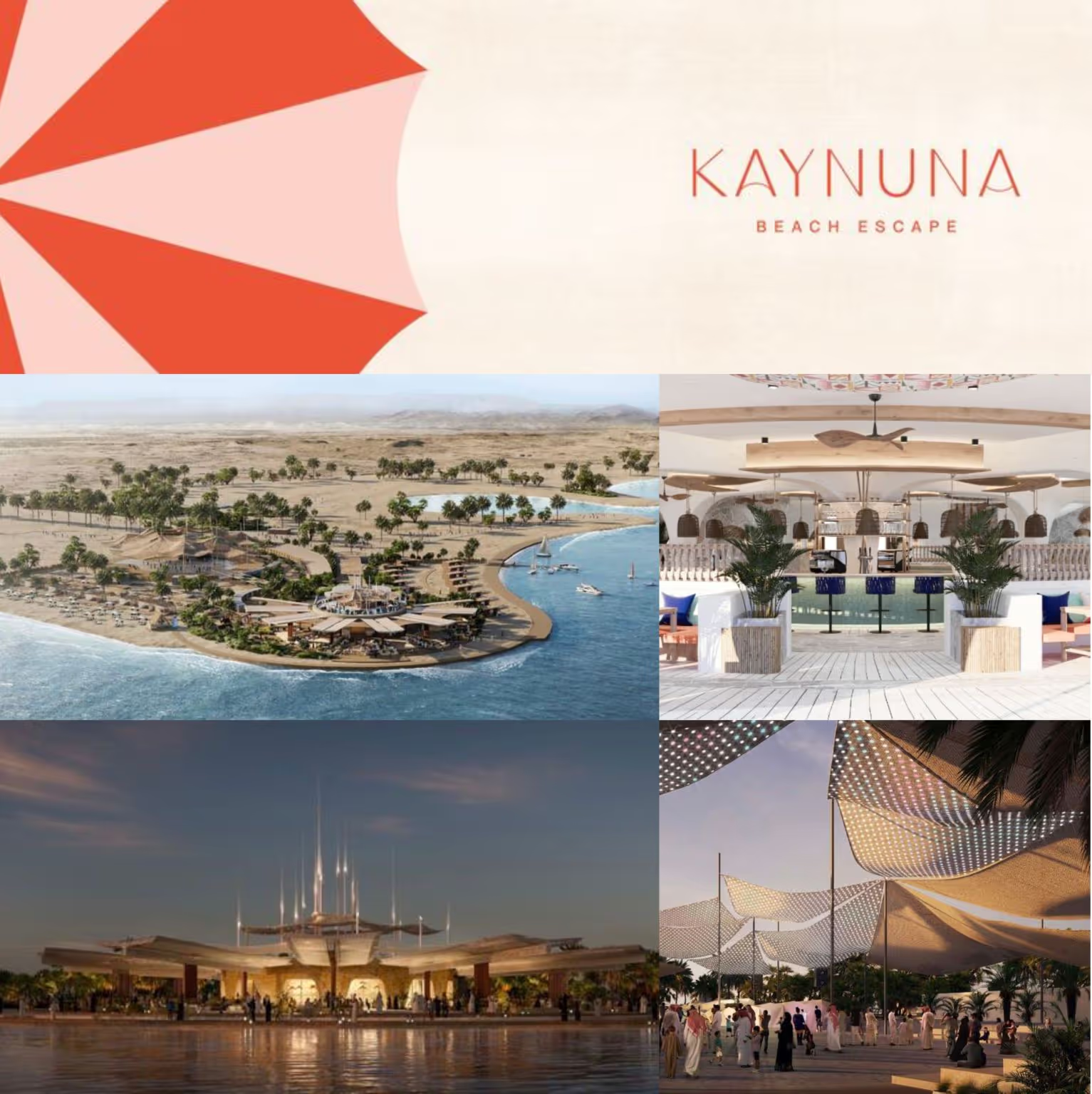
Baheej unveils Kaynuna: A Heritage-Inspired Beach Club at Yanbu Waterfront.
Kaynuna's architecture pays tribute to Yanbu’s storied past, as a key stop along the pilgrimage route to Madinah from Africa. Seamlessly blending history and modern sophistication, the site takes inspiration from the caravanserai that once stood there.
Designed for domestic tourism, this is one of a suite of four projects upcoming in Yanbu, Red Sea. This will be a cornerstone in a series of activation anchors that will help bring this coastline to life.
Guests will be able to soak in the beauty of the Yanbu sunset, either in private cabanas or by immersing themselves in the vibrant energy of the social beach areas, connections are made, and moments are shared.
A most heartfelt thank you to all at Baheej for inviting us to contribute to this fantastic destination.
Baheej unveils Kaynuna: A Heritage-Inspired Beach Club at Yanbu Waterfront.
Read More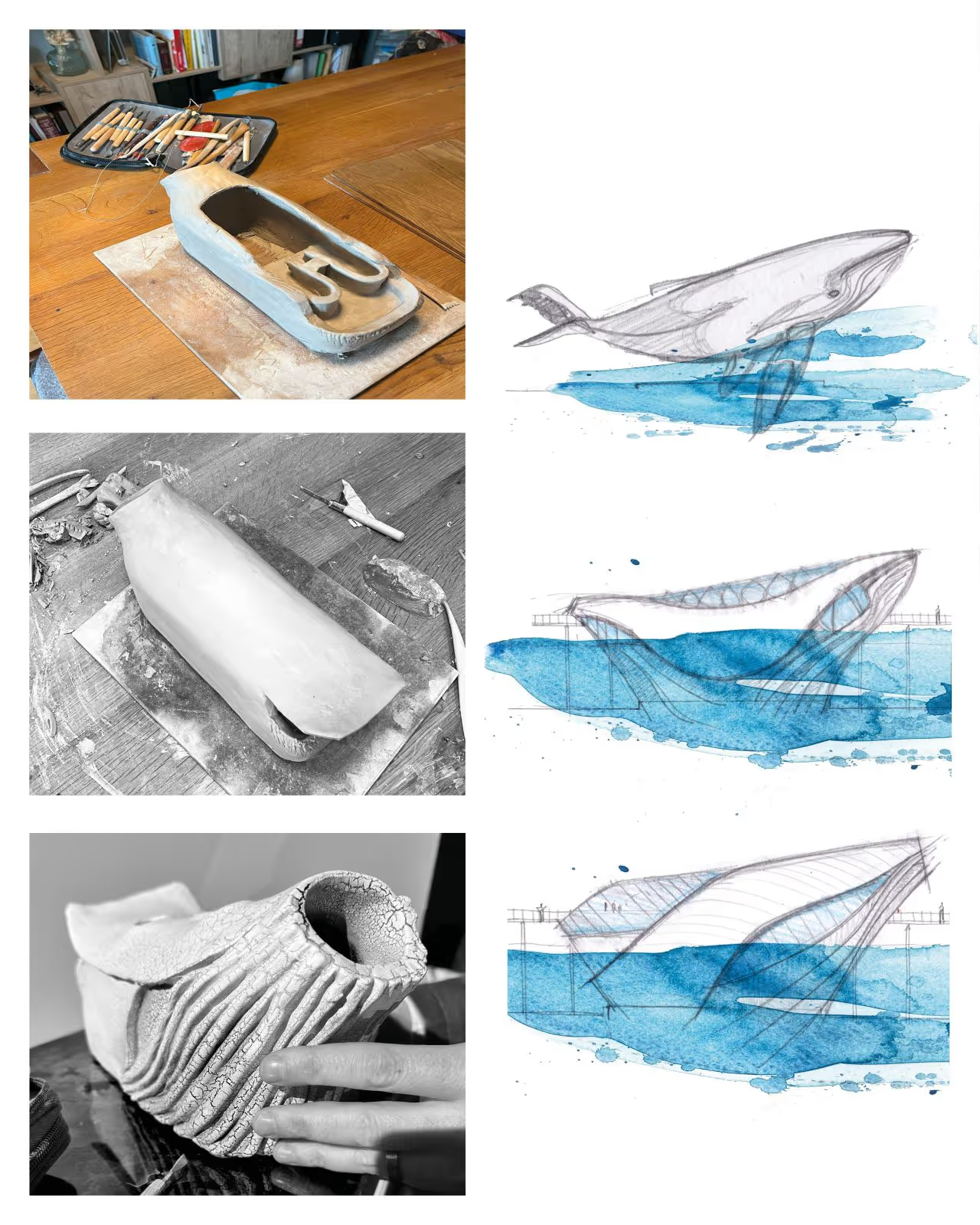
The lines between architecture and art, especially within the design phase, can become blurred. In these early moments, experimentation, intuition, and abstract thinking guide the project just as much as technical planning.
Shown is one of the early porcelain models of ‘The Cetacean’, created by Richard in his home studio, demonstrating the versatility and blending of multiple art styles to execute a concept—a view behind the curtain of the multi-skilled operation here at BACA.
The cracked glaze finish shown on the model took extensive experimentation to perfect. As with pottery comes the unpredictable nature of the final form, which reveals itself only after firing, adding an element of surprise throughout the creative process.
Sitting above the water, the Cetacean is an interpretation of a whale, raising its head over Geographe Bay in recognition of the bay's importance in the migration patterns of humpback whales. Underneath will house the world’s largest natural marine observatory.
The form of the Cetacean is inspired by a manoeuvre that whale watchers call a ‘spy hop’, where inquisitive whales raise their heads and eyes to breach the surface of the water to observe us instead. Plus, the textured feature of the Cetacean is reflective of a whale’s ventral pleats, a large section of skin beneath the mouth where barnacles typically attach.
Both the Cetacean’s architectural form and its ceramic model celebrate the beauty found within imperfections, from the barnacles on a whale’s skin to the cracks revealed in glazed porcelain.
The lines between architecture and art, especially within the design phase, can become blurred.
Read More
At GBB Venture Portugal, BACA’s director Richard Coutts had the honour of meeting Salvatore Giorgio Dino, who recognised the practice’s long-standing commitment to water-inspired architecture. Knowing that our projects are created on, in, near, or even under water, he introduced Richard to D’ORO’s latest masterpiece, The Golden Waves, a publication rooted in oceans, coasts, and the elegance of architectural storytelling.
D’ORO’s work is widely celebrated for its luxury architectural craftsmanship, seen in its hand-embossed copper covers and delicate lithographs produced for state institutions from the Vatican to the US and UK. The Golden Waves continues this tradition, capturing bodies of water with such purity that no filters or edits are ever applied. Once printed, the negatives are destroyed, ensuring that every image becomes as rare and irreplaceable as the most exclusive floating architecture projects.
Turning the pages is typically a gloved experience, reflecting the level of artistry present in these creations. Yet an exception was made for an architect whose world revolves around coastal architecture design, allowing Richard to feel the texture of the lithographs directly. Their layered surfaces, subtle but perceptible, mimic the softness of a still lake, a tactile reminder of nature’s quiet complexity.
This meeting resonated deeply with us, as our design philosophy is inseparable from water. Whether through water-inspired architecture or through personal artistic pursuits, the studio’s fascination with water continues to shape every project. Each brushstroke on canvas, each innovation in practice, becomes part of an ongoing conversation about the beauty, depth, and enduring significance of the world’s oceans and waterways.
At GBB Venture Portugal, BACA’s director Richard Coutts had the honour of meeting Salvatore Giorgio Dino, who recognised the practice’s long-standing commitment to water-inspired architecture.
Read More
In an era where current groups of new team members appear to be quieter and more introspective than in previous years, face-to-face networking is arguably more important now than ever, not for just building skills, but for our own wellbeing:
In business, trust is everything. Even through bonding over shared interests outside of the world of work: children, painting, sports, spending time with your family etc. contributes to strengthening the foundation of trust.
Events like GBB Venture give everyone the chance to strengthen and display these skills in a social setting, surrounded by like-minded professionals (and plenty of good food!) and give the opportunity for directors and senior managers to converge and discuss the challenges of upkeeping their business and through sharing, realise their struggles aren’t acute to their business.
It was great to catch up with of UN Studio Yoo & Phillippe Starck colleagues, and great to meet new architectural friends - particularly Paolo Testolini of Woods Bagot. A fellow designer at NEOM with a passion for watercolour drawings. A new lifelong friend in the making. - Richard Coutts
Face-to-Face networking is arguably more important now than ever, not for just building skills, but for our own wellbeing...
Read More
We’re incredibly proud to share a project that’s especially close to my heart: a new eco-resort in the Maldives, that features in this month’s iconic Sleeper Magazine. We’ve been working closely with AIMA Construction to bring this vision to life in Baa Atoll, just north of Malé. The resort will feature a mix of overwater villas and beachfront accommodation, along with five unique restaurants, a clubhouse, and a treetop spa made up of individual treatment pods.
One of the standout elements for me is the arrival pavilion. I envisioned it as a sculptural form, inspired by driftwood scattered along the shoreline, natural, weathered, and seamlessly integrated into the landscape. It sets the tone for what we want guests to feel: that they’re entering a space in harmony with its surroundings.
The overwater villas draw inspiration from the manta rays that glide through the waters of the region. Their distinctive shapes and fluid motion guided our design, with sweeping rooflines and curving façades that opens to expansive decks and private pools.On land, the treetop spa nestles high in the canopy. We designed it to immerse guests in nature, each spa pod is built around biophilic principles, while open-air relaxation spaces offer breathtaking views of the island’s lush interior.
Dining is an important part of the experience too. Each of the five restaurants will celebrate local culture, using regionally sourced materials and handcrafted furnishings to create spaces that feel rooted, welcoming, and real.
From the start, sustainability has been at the heart of everything we've done. We're deeply committed to protecting the fragile ecosystem of the Baa Atoll. To that end, the resort will run on floating solar panels and a biomass centre powered by coconut husks. We’re also using prefabricated and recycled materials throughout construction to reduce our environmental footprint as much as possible.
We’re incredibly proud to share a project that’s especially close to my heart: a new eco-resort in the Maldives, that features in this month’s iconic Sleeper Magazine.
Read More
Great to catch up with RIBA’s Jack Irlam-Mowbray and Joe Ellis last week to share feedback on how Chartered Practices use RIBA services—and where there’s room to grow.
We suggested that Chartered membership could benefit from a more dynamic, co-working-style space within Portland Place. Imagine small, medium, and large practices bringing clients—current and future—into the iconic building for meetings in spaces tailored for flexibility and quick customisation. This would not only increase footfall at RIBA but also transform it from a museum-like setting into a vibrant, cross-disciplinary hub of activity.
We also proposed that RIBA amplify its presence on social media by inviting practices to showcase what they do—then link those stories to the “Find an Architect” page. It’s a simple but powerful way to boost public understanding of an architect’s value and help future clients connect with local talent.From our Part 3’s and newly qualified architects.· PEDR sheets are hard work to fill in,· Simplify the RIBA’s websiteThe RIBA also kindly shared information on forthcoming events and socials.
This page is regularly updated with upcoming RIBA events if you and the team wanted to attend more events/talks etc. We tend to highlight the major ones in our Member Update newsletter every Thursday but this is the full programme of activities.
RIBA London Summer Socials
There are two more London Summer Socials coming up soon that you and the whole team are welcome to attend. Free for members. A good opportunity to have a drink and connect with other London-based members. I’ve heard they’ve organised some interesting speakers this year. You can reserve tickets via the links below.https://lnkd.in/egBuKihThttps://lnkd.in/ehT3Xxkj
RIBA London region newsletter
There’s a monthly newsletter issued by the RIBA London region, updating members on their activities and promoting their local Chartered Practices etc. If you don’t receive this and want to, I can get your email address added to the mailing list.If you ever need anything from RIBA, don’t hesitate to contact me and I’ll be more than happy to assist.
Contact details for the RIBA membership team below:
It was great to catch up with RIBA’s Jack Irlam-Mowbray and Joe Ellis last week to share feedback on how Chartered Practices use RIBA services.
Read More
Following the driest spring since 1956, the Environment Agency urged UK water companies to strengthen supply protection plans. Both flooding and drought result from similar issues—dried, compacted soil can't absorb heavy rainfall, causing surface runoff. This underscores the need for rainwater attenuation in new and existing developments.
Our practice, commissioned by Portsmouth Council, applied the LifE (Long-term Initiatives for Flood Risk Environments) methodology, developed for Defra, to regenerate a 50-hectare estuarine brownfield site that once housed IBM’s headquarters. Located in Flood Zones 2 and 3 on the Portsmouth Peninsula, about 5 km from the city centre, the former business park now includes The Porsche Centre and Village Hotel Portsmouth.
BACA’s vision transforms Lakeside into a medium-density, sustainable, flood-resilient community of ~1,500 homes. It centres on repurposing Building 1000 as a landmark residential core, with penthouses and lakeside views. The adjacent lake becomes a community asset, enabling water-based leisure and hosting floating and static homes.
Housing types are assigned by flood risk:
• Floating homes in flood zone 3b (river course)
• Amphibious homes in flood zones 3a and 2
• Flood-resilient homes in zone 2
• Traditional, retrofittable homes in zone 1
This zoning reduces flood risk and aligns with urban planning best practices, incorporating active frontages, density goals, and public/private amenity access. Elevated primary roads ensure connectivity during storms.Green and blue infrastructure defines the masterplan. Three “swale corridors” flow from the lake, splitting the site into four zones—business, residential (Building 1000), and two mixed-use quarters. These swales serve as SuDS, landscaped parks, and flood channels. Positioned near the water, they manage runoff and direct it to flood storage zones, creating vibrant green spaces that support recreation and biodiversity.
By centralising these swale parks, the plan maximizes usable land and improves wayfinding. Water is embraced as a feature, not a threat, enabling natural flood attenuation and resilience to both flood and drought.Minimal hard infrastructure maintains site permeability. Low-carbon homes cluster around shared green areas designed for water management. Walkability and sustainability are key, with EV charging, cycle lanes, and a local shuttle service.
The Lakeside masterplan exemplifies climate adaptation, merging placemaking with flood mitigation to create a liveable, water-conscious neighbourhood functional in drought and flood alike.
Following the driest spring since 1956, the Environment Agency urged UK water companies to strengthen supply protection plans.
Read More
You can’t get much closer to the water than Phyllis Court Club, one of England’s oldest private members’ clubs, set right on the banks of the Thames in Henley.
We were honoured to tour this historic venue and discuss exciting plans for its future. More to come soon.
Phyllis Court holds a prestigious spot in the heart of Henley Royal Regatta history. Founded in 1906 by Roy Finlay to elevate the regatta experience, it quickly became a social epicentre, drawing high society to its elegant Georgian clubhouse and sweeping riverside lawns.
The sun was shining, the croquet lawns were alive with international competition, and the spirit of tradition was as strong as ever.
You can’t get much closer to the water than Phyllis Court Club, one of England’s oldest private members’ clubs, set right on the banks of the Thames in Henley.
Read More
The Environment Agency (EA) released updated flood risk assessments in December 2024, incorporating enhanced data and modelling techniques to reflect the impacts of climate change.
Detailed and more precise flood-risk maps incorporating the latest UK Climate Projections and based on updated high-resolution terrain information of 2m or finer resolution, are now available to the public. These assessments indicate that 6.3 million properties in England are currently at risk of flooding, a number projected to rise to 8 million by 2050. (Source: Financial Times).
On a positive note, The Environment Agency's new maps will help unlock potential development sites in the UK by providing clearer, more precise flood risk data. By updating outdated flood zone classifications and incorporating the latest climate modelling, these maps will allow developers to identify areas suitable for construction with greater confidence. Previously, some sites were incorrectly categorised as high-risk due to broad flood assessments, limiting development opportunities. The improved maps will refine these designations, potentially reclassifying some locations as viable for housing and commercial projects. This can streamline planning approvals and reduce costly flood mitigation requirements. Additionally, local authorities and developers will have better insights into sustainable drainage solutions and climate resilience measures, ensuring safer, more environmentally sound developments. By offering a more accurate understanding of flood risks, the new maps will support the UK’s housing and infrastructure goals while balancing environmental protection and economic growth.
In April, Richard will be discussing with City Hall how we can use BACA’s Planning principles, developed for DEFRA, to unlock these sites to help deliver much needed housing in Greater London.
Detailed and more precise flood-risk maps incorporating the latest UK Climate Projections and based on updated high-resolution terrain information of 2m or finer resolution, are now available to the public.
Read More